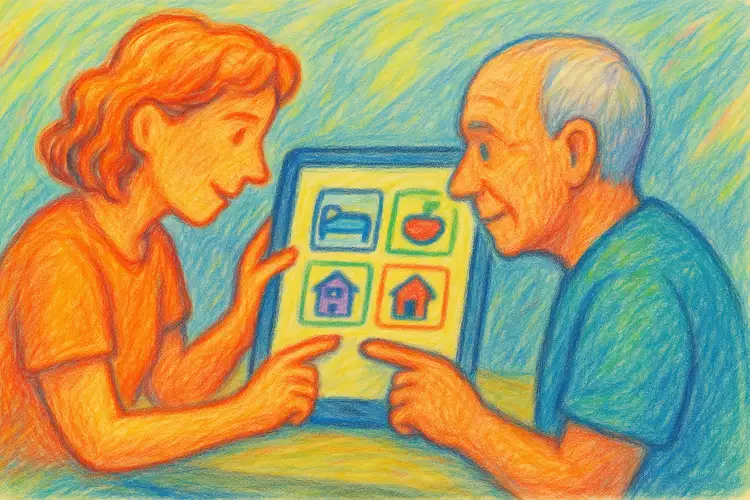Digital Visual Planning in Care Institutions
Published {$created} by Carsten Blum
In residential care settings, structure is not just helpful — it’s essential. Many residents rely on predictable routines to feel calm, secure, and in control of their day. For individuals with autism, ADHD, or cognitive challenges, a clear visual overview can mean the difference between confidence and confusion.
Traditional tools like paper-based plans or printed pictograms have been valuable for years. But as institutions grow and care needs become more complex, keeping those systems updated, synchronized, and accessible becomes increasingly difficult.
That’s where digital visual planning offers a real advantage.

Challenges with Traditional (Paper-Based) Systems
Even well-designed physical schedules come with limitations:
Hard to update: When a plan changes, every printout or board must be adjusted manually.
Inconsistent communication: Staff may have different versions of the same plan.
Limited accessibility: Plans are often tied to one location — a wall, a folder, or a single staff office.
No data or insight: It’s difficult to track engagement or evaluate how well routines are followed.
Maintenance overhead: Printing, laminating, and replacing symbols takes time and resources.
For modern institutions, these challenges can add up — costing both time and clarity.
Benefits of Digital Visual Planning
Digital tools bring structure and flexibility together. They make it easier to plan, communicate, and adapt — without losing the visual clarity residents depend on.
Benefits for Residents
Predictability and security: Daily routines are always visible and up to date.
Personalized support: Plans can be tailored to each resident’s needs and preferences.
Accessibility: Schedules can be displayed on tablets, smart screens, or personal devices.
Reduced anxiety: Fewer surprises and clearer communication lead to calmer days.
Greater independence: Residents can follow their own plan with minimal staff intervention.
Benefits for Staff and Institutions
Central management: Staff can update schedules from a single dashboard — instantly syncing across devices.
Consistent communication: Everyone sees the same version of the plan in real time.
Time efficiency: Less manual work means more time for direct care.
Better coordination: Visual overviews support shift handovers and multidisciplinary collaboration.
Scalability: Easy to roll out across multiple rooms, groups, or even institutions.
Real-World Example
Imagine a residential home where each room has a small tablet showing the resident’s personalized daily schedule. When a staff member updates the activity plan — for example, a change in mealtime or therapy session — the new version appears instantly everywhere: on the wall screen, staff devices, and the resident’s own tablet.
This saves time, prevents misunderstandings, and most importantly, keeps the resident calm and informed.
Implementing Digital Visual Planning
Start small – begin with one group or section of the institution.
Involve both staff and residents – gather feedback early to ensure usability.
Standardize visual symbols – consistency builds recognition and comfort.
Train and support staff – ensure everyone feels confident using the system.
Evaluate regularly – look for improvements in communication and resident well-being.
Summary
Digital visual planning combines the clarity of pictograms with the flexibility of modern technology. For care institutions, it means better communication, smoother workflows, and calmer, more independent residents.
By bringing visual structure into a digital environment, institutions can finally move beyond paper — creating a daily life that’s not just organized, but truly connected.
Next step: Consider where a digital visual planning system could make the biggest impact in your institution — and start small.